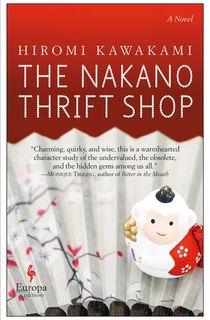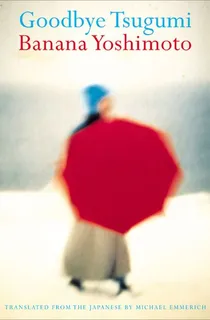One author looms so large within the Japanese literary scene as translated into the English language that he is sometimes treated as the entirety of it. Haruki Murakami’s novels have sold tens of millions of copies abroad; when it was published in the US in 2014, Colorless Tsukuru Tazaki and His Years of Pilgrimage topped the New York Times bestseller list for two weeks.
Yet there are more Japanese authors whose works have been deftly translated for international readers to enjoy. And while elements of Murakami’s writing that readers love – a focus on the minutiae of daily life entwined with deep philosophical introspection, intense explorations of sexual desire, a calm and controlled use of language – can be found in the works of his peers, Japanese literature is by no means a genre. Unique voices abound, and readers are sure to find one that speaks to them.
Here is a selection of Japanese books to get you started.

Norwegian Wood
Well, there is a reason he sells so well. While Murakami’s later works, such as The Wind Up Bird Chronicle, Kafka On The Shore and 1Q84 transcend into magical realism, his first big hit – 1987’s Norwegian Wood – remains planted in the real world. Dealing with themes of mental illness, sexual desire, loneliness and alienation within the setting of 1960s Tokyo, it is the story of a young man’s suicide and its effects on those closest to him: his friend and our protagonist, Toru Watanabe, and his girlfriend, Naoko.
Murakami’s novels have been criticized for featuring female characters who are more thinly sketched than their male counterparts, and who frequently act as catalysts for journeys of discovery by men rather than being given their own narratives. This is a charge he has discussed at length with the author of the next novel…

Breasts and Eggs
A bestseller in Japan after its publication in 2010, Breasts and Eggs became Meiko Kawakami’s first novel to be translated and published in English in 2020. Divided into two distinct parts, the first (originally published on its own as a novella in 2008) unfolds over the course of a weekend trip that the protagonist Natsuko’s sister and niece pay to visit her in Tokyo. The sister is in her 40s, works as a hostess in Osaka, and is obsessed with getting breast implants; her 12-year-old daughter has not spoken in six months. The second part of the novel takes place over a much longer time period, and sees Natsuko grapple with her stalling writing career, societal expectations, desire, fertility and – at length – the ethics of sperm donations.
Breasts and Eggs sparked controversy among some conservative Japanese commentators upon its publication, while the English translation has been criticized for not capturing the original’s writing in distinct Osaka dialect, losing some of its class commentary. Still, Kawakami won prizes at home and is quickly finding a fan base abroad.

The Nakano Thrift Shop
As in Breasts and Eggs, in Hiromi Kawakami’s The Nakano Thrift Shop we find a bookish female protagonist sharing her dreams, anxieties and opinions on life in modern Tokyo. This time our lead, Hitomi, actually works in a secondhand bookshop, also selling other miscellanea, and begins a relationship with delivery driver Takeo. In front of this calm backdrop, the novel dives deep into what it means to be isolated and how to form connections with others, even when doing so causes even greater anxiety.
The Nakano Thrift Shop was originally published in 2005, but was not translated and released in English until 2016, following Kawakami’s other hit, Strange Weather in Tokyo, which was first published in 2001 and translated in 2012.

A Personal Matter
Kenzaburo Oe is a titan of contemporary Japanese writing, and was awarded the Nobel Prize for Literature in 1994. A Personal Matter was published three decades earlier, in 1964. The grim, graphic, semi-autobiographical story covers a young teacher’s struggle to come to terms with the birth of his son with a mental disability.
The novel is seen by some as darkly comic satire; by others as simply dark. You certainly won’t like Bird, the narrator. But as a visceral ride through feelings of shame, disgust, self-absorption and self-destruction, and issues of conformity, alcoholism and nihilism, it is impossible to forget.

In The Miso Soup
In Ryū Murakami’s short, suspenseful novel In The Miso Soup, we meet Kenji, a 20-year-old man who tours foreigners around a red light district of Tokyo; and Frank, an American who has enlisted Kenji’s services, and who has an air of untrustworthiness about him. We also find Kenji’s musings on cultural differences between Japanese and Americans, a vivid picture of the seedy side of a city, and a masterfully built sense of foreboding.
Published in 1997, it followed other successes for Ryū Murakami including Almost Transparent Blue, Coin Locker Babies and Audition.

Convenience Store Woman
Convenience Store Woman questions the stultifying oppression and inherent meaningless of many societal norms, both in Japan and beyond, challenging the reader to answer what, exactly, is wrong with a woman living alone, not having children, not having romantic relationships, and working in a roadside convenience store for her entire career.
Narrator Keiko Furukura, who it is implied (though not explicitly stated) to be autistic, is frequently puzzled by and seeks to emulate the speech patterns, emotional responses and even dress senses of those around her, something she has done comfortably within the regulated, predictable world of the store in which she works for 18 years. When a wrench is thrown into the works of her orderly life, the novel picks up real pace, and it’s a short but moving read that’s at points laugh-out-loud funny. If there’s real truthfulness to be found in its pages, it’s perhaps because author Sayaka Murata has herself worked part-time in convenience stores and is responding to the judgement she faced from those around her.
Related: 10 Empowering Books with a Strong Female Protagonist

Goodbye Tsugumi
A rare novel on this list in which we find ourselves out of Tokyo, Goodbye Tsugumi is the story of the bond between two female cousins who have grown up in their family hotel in a seaside town. Maria is the daughter of an unmarried woman, and Tsugumi is an intelligent but often unpleasant character suffering from a debilitating illness. Maria gets the opportunity to move to Tokyo to attend university; but returns for one last summer before the hotel is closed, at a time when Tsugumi’s condition appears life-threatening.
Full of nostalgia, and a warmth tinged with melancholy, Banana Yoshimoto’s Goodbye Tsugumi, published in Japanese in 1989 and in English in 2002, is a breath of fresh air.

Tokyo Ueno Station
A novel it would be fair to call ‘haunting’, the ghosts of one man’s past can be found throughout Yu Miri’s Tokyo Uenu Station, which tells the story – in fragments – of how our narrator, Kazu, came to be homeless and living outside the titular station. Class divisions and the struggles of poor, rural life are a core theme, as is grief, but all are explored through a dreamlike lens, feeling both immediate and distant. The book was published in 2014, with the translation following in 2019.

The Woman in the Dunes
Published in 1962, this striking novel by Kōbō Abe follows Jumpei Niki, a Tokyo schoolteacher, on his visit to a fishing village, and chronicles the strange events which unfold there. An instant hit and now considered a classic of the era, it was made into a film (part of the Japanese New Wave) which won the Special Jury Prize at Cannes in 1964 Cannes Film Festival.

I Am A Cat
While we have generally stuck to post-1950s novels for this guide, there is of course a rich trove of Japanese literature dating to the early 1900s and earlier. Natsume Sōseki’s I Am A Cat was published in 1905 and is a satire told from the perspective of a cat who comments on the lives of various individuals and families and their middle class sensibilities. The novel has retained cultural relevance and is often studied in schools – call it Japan’s Catcher in the Rye, if you must.
Related: 10 of the Best Books for Cat Lovers

Modern Japanese Literature
For an even broader look at Japanese literature, this anthology is full of gems, including plays, essays, poetry, and reportage. Notable works include Growing Up by Ichiyo, Nagai’s The Sumida River, Kokomitsu’s Kafkaesque Time, and Kawabata’s The Mole. You’ll also get author Donald Keene’s explanations of different movements and periods, the Japanese publishing industry and why certain voices have resonated through the years.
Keep Reading: 9 Books About the Asian-American Experience
Feature photo: Robby McCullough / Unsplash






